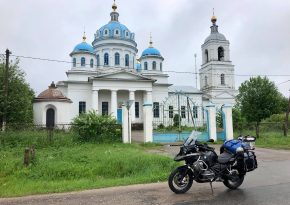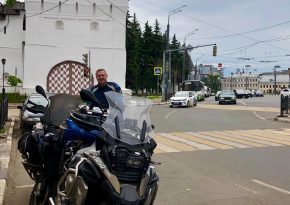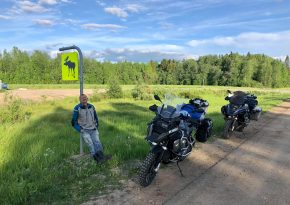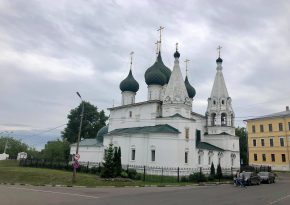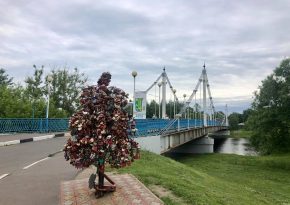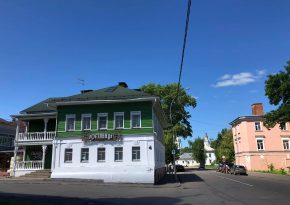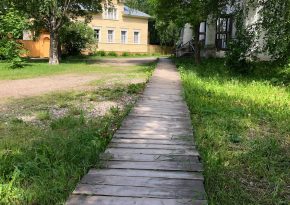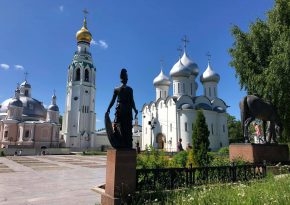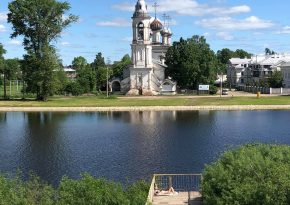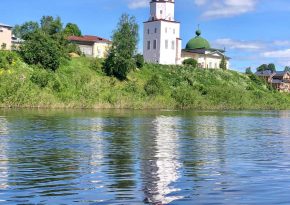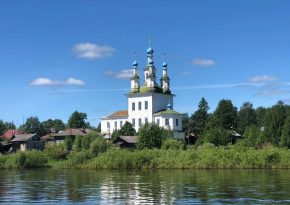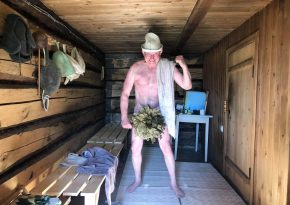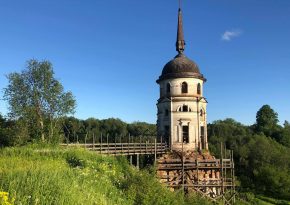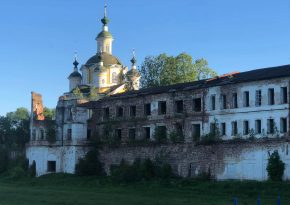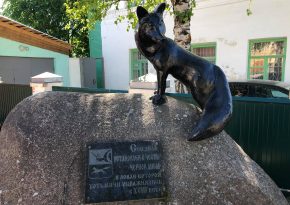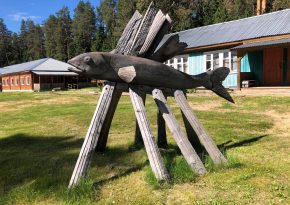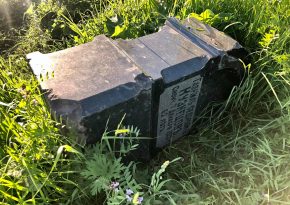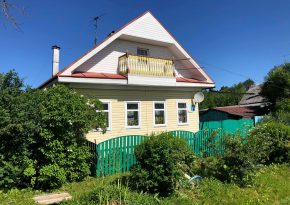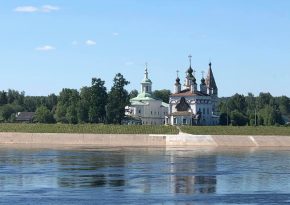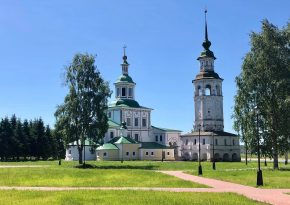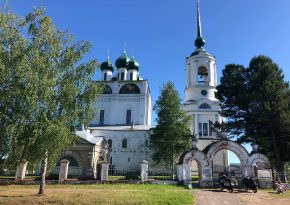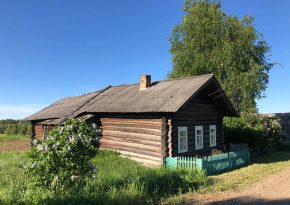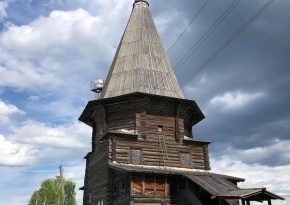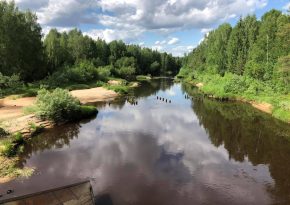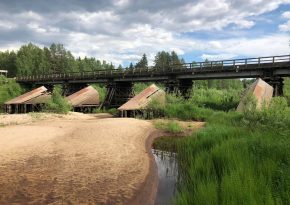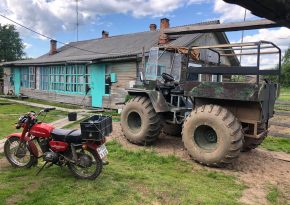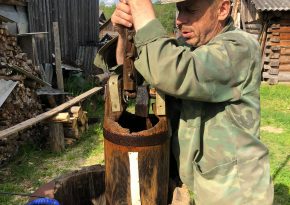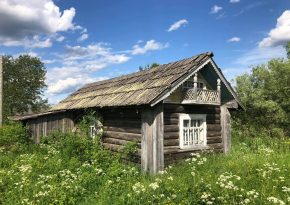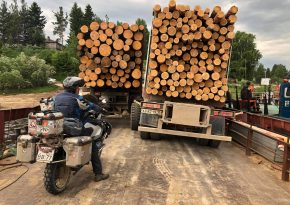To the White Sea on two wheels. Part 1.
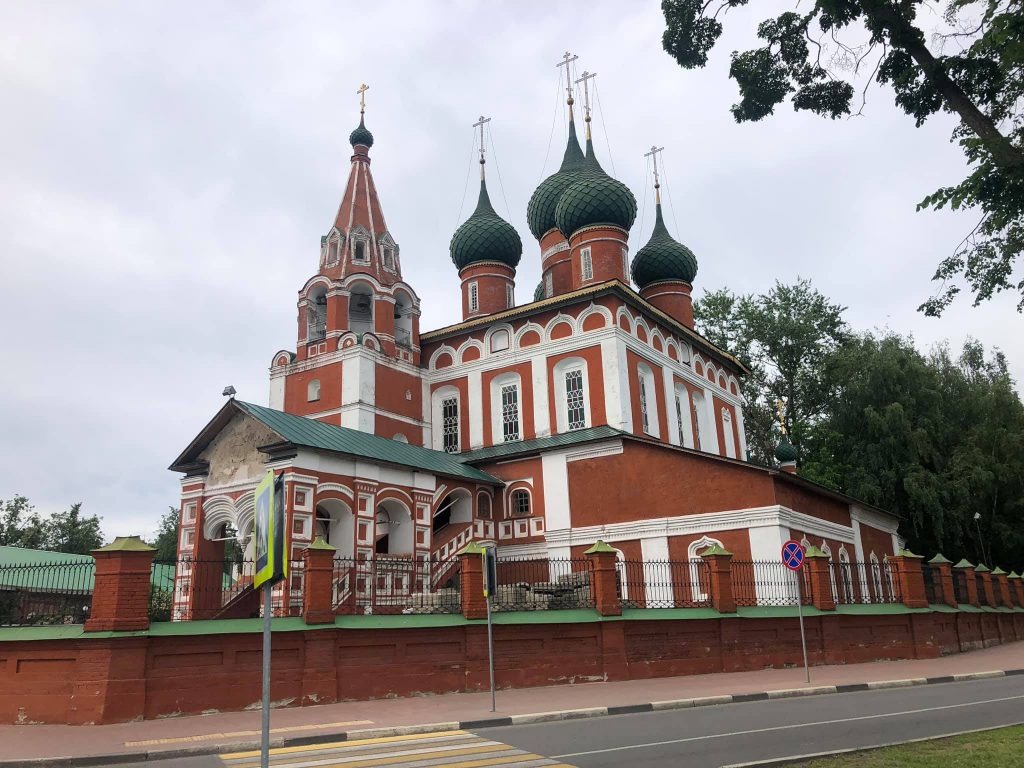
Vologda.
When one mentions the name of one of the most beautiful and ancient cities in Russia, Vologda, we immediately think of Vologda's butter, lace, linen and a song from the distant 70s about "a house where a carved palisade is nearby".
By the way, do you know what a palisade is? To be honest, I used to think of it as some kind of architectural element of the house, such as a casing or a shutter. It turns out that this is a low, light, beautiful wooden fence in front of the house. There is usually a small garden or flower beds behind it as well.
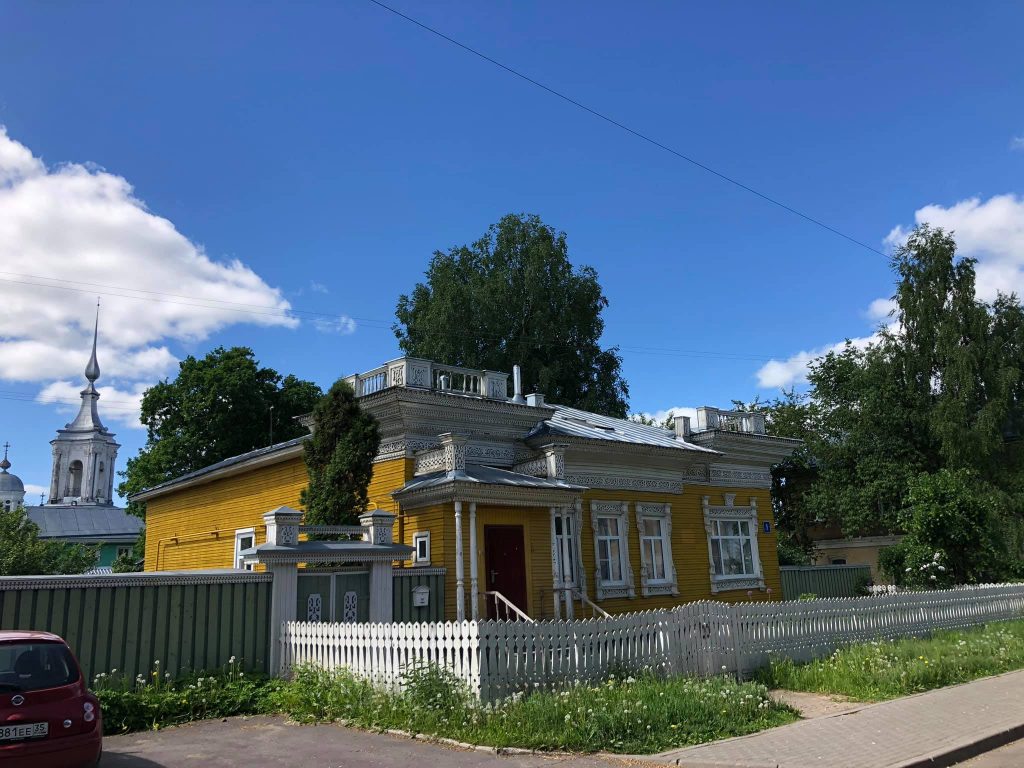
There are a lot of such old merchant and noble houses with carved platbands, balconies and mezzanines in Vologda. And so were the palisades preserved.
Vologda also can be described as a town of Orthodox churches, monasteries and bell towers. There are 63 temples and 12 monasteries in quite a small town! Can you imagine how long it will take you to visit each of them?
We were lucky with the weather. That was a gorgeous sunny day! And our guide was probably one of the best guides I've ever met. His name is Alexey and he is a historian, a teacher in the theological seminary and a native of Vologda. Three hours of the tour ran by in one breath. After that, I can surely say, we fell in love with Vologda.
Totma.
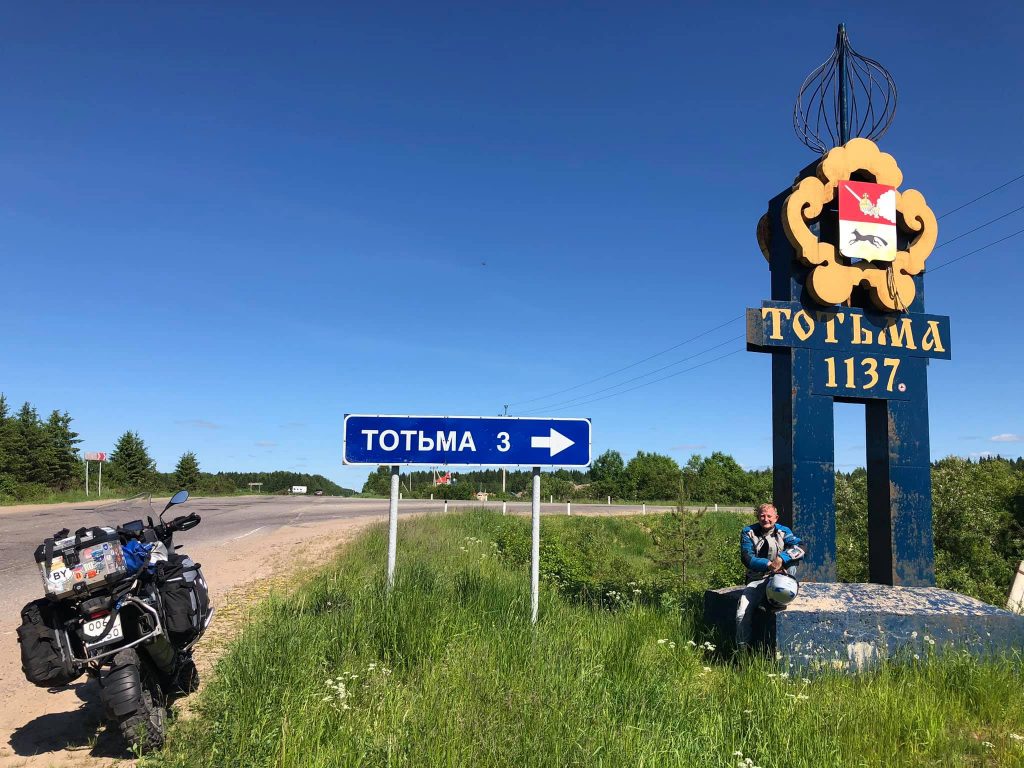
After lunch we left Vologda and went along the M-8 highway further to the northeast. The weather was gorgeous and the track was excellent. We were riding at a cruising speed of about 150 km/h. From time to time we saw forests and swamps on the left and the right of the road. Sometimes there were small villages with black log houses and crooked sheds on our way.
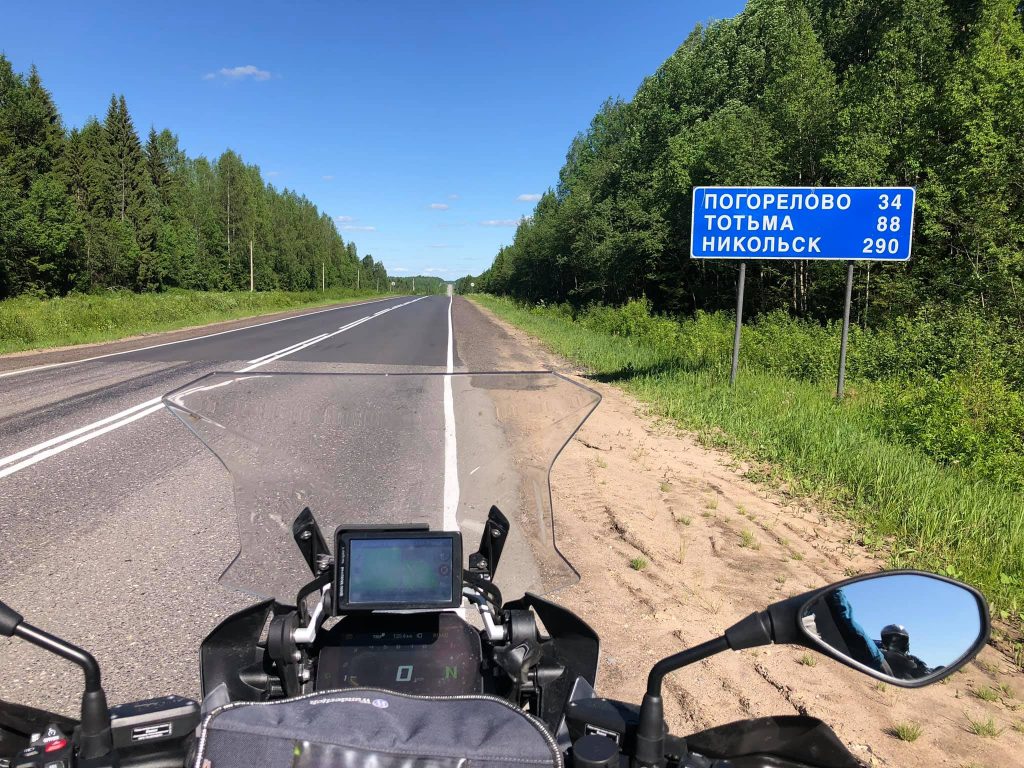
After two hours, we turned off the highway at the Totma signmark.
Totma is one of the regional centres, a small town with a population of about 10 thousand people, but 10 years older than Vologda and Moscow. It is located on the left picturesque bank of the Sukhona river at the confluence of it with another river, which has got an unusual name Pesya Denga (Dog's Money).
Here we are met by my old friend Nikolai, who is a native of this wonderful town. Lunch is ready, the sauna is heated and some excellent moonshine infused with berries is waiting for us on the table.
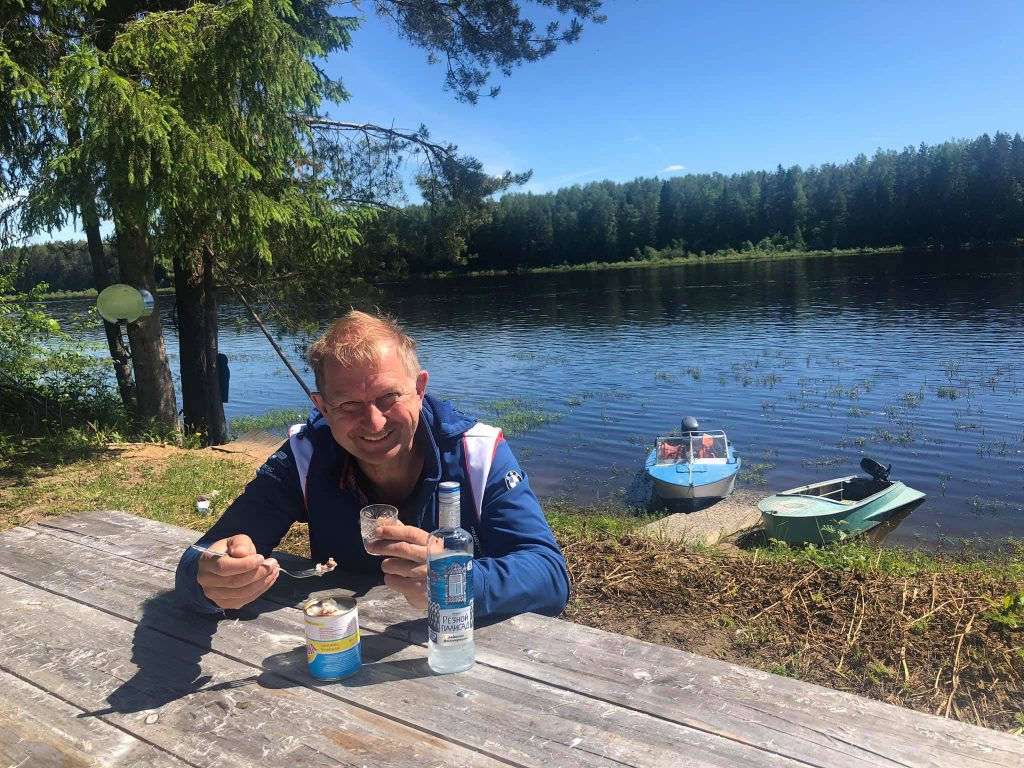
And then we went on a walking tour around this unique town and saw its amazingly beautiful temples that resembled us huge ships, dusty streets with wooden sidewalks, monuments and the dilapidated but majestic Transfiguration Monastery.
The town is famous for the fact that in the Middle Ages it was one of the centres of trade on the North Dvina waterway. And in the 18th century merchant ships used to set off here for England and even Alaska!
Long ago Totma had been one of the richest towns in Russia until Peter the Great opened "a window to Europe" and an access to the Baltic Sea.
Veliky Ustyug.
When this town is mentioned, almost everyone immediately has an association with Father Frost (the Russian version of Santa Claus) and his estate. Indeed, since 1999 this fabulous character has been officially registered in Veliky Ustyug by the ex-mayor of Moscow Luzhkov for some reason. Father Frost's residence, the garage for deer and the housing of numerous other small animals is located there. Unfortunately, Father Frost like anyone else was in lockdown then and we were not able to see him.
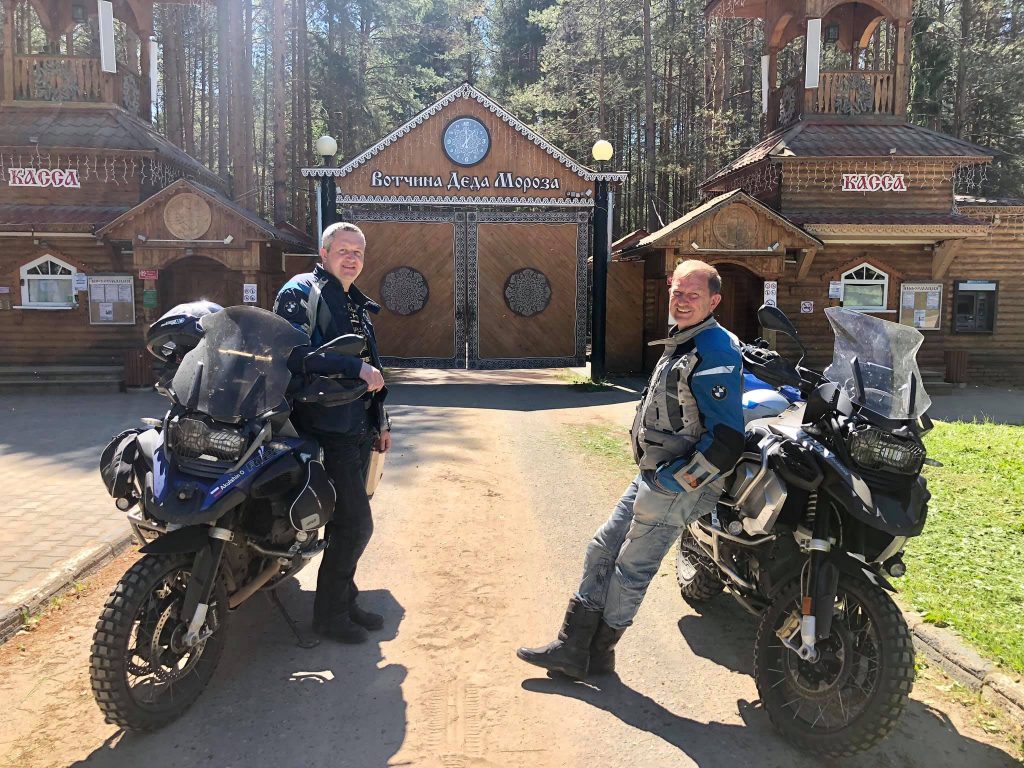
But Ustyug is famous not only for Father Frost. It is one of the oldest Russian towns with a rich historical background and glorious past. During its period of prosperity, which lasted from the 15th to the 17th century, it was the most important transshipment point on the North Dvina trade waterway. Those days the town was developing rapidly, numerous temples and stone merchant houses were being built. Most of them have been preserved, but the condition in which they are so far is deplorable.

But the road to Veliky Ustyug has been done well, the embankments of the Sukhona river have been straightened and some new asphalt has been laid on some streets.
We walked 10 km across the town and I got the impression that there is a lot of work for the local mayor left. May God bless him and give the money for the restoration.
And we are going further! The next stopover will be in an equally remarkable place, Solvychegodsk town.

Solvychegodsk.
Solvychegodsk.
After Veliky Ustyug we continued our journey to the north and soon crossed the border of the Arkhangelsk region. Our further route is planned along the Northern Dvina, but today we deviated from it on purpose in order to stop in another very interesting town on the map of our homeland, Solvychegodsk.
It is located only 110 km from Veliky Ustyug, but you have to cross the full-flowing Vychegda river by ferry and overcome a dozen kilometers off-road in order to get to it.
Actually, in Solvychegodsk, there are no paved asphalt roads. The town greeted us with a beautiful temple on a high steep bank and huge white letters "SOLVYCHEGODSK".
The history of the town is very interesting. It was founded in 1492 and originally had several names, but they were all related to the word "salt".
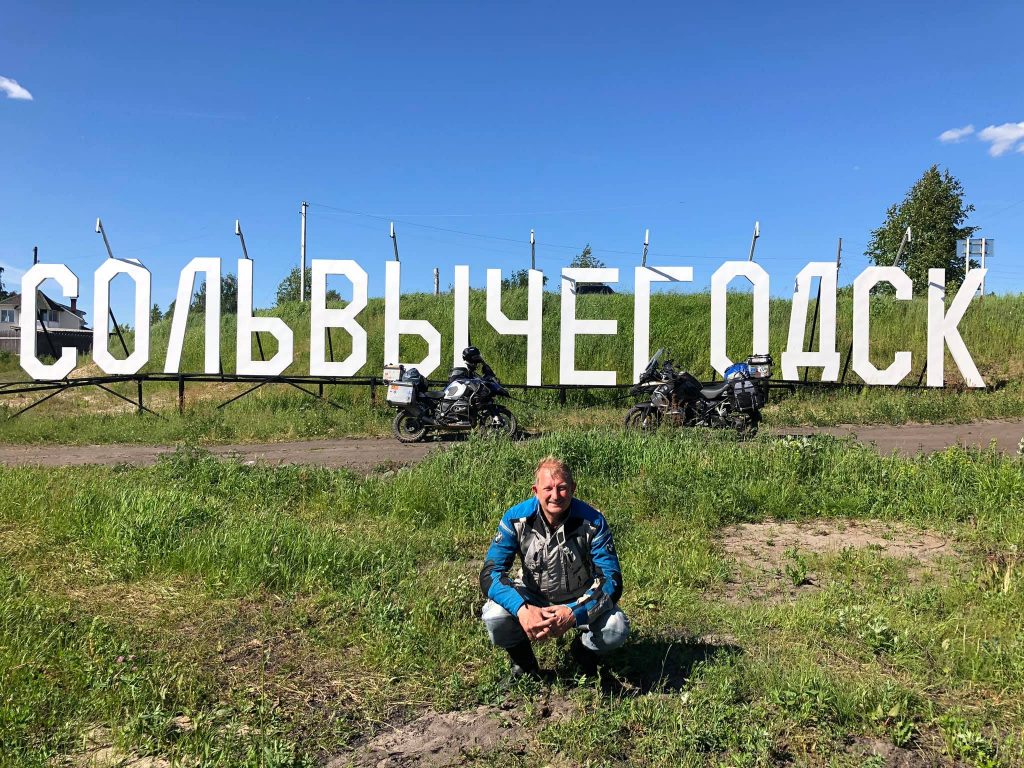
Salt has been obtained here since the foundation of the town. The thing is that in this area salt water springs are streaming from the ground and there are even some small salt lakes. Actually, long ago this product was strategically important and cost a lot!
The Stroganovs (a famous dynasty of merchants and industrialists of the 17th century) monopolised the extraction of salt and at the same time invested a lot of money in the development of the town. Wonderful churches, a monastery and stone buildings were built back then.
Unfortunately, we could not visit any museums and temples because everything was closed. That's lockdown. And even an attempt to stay in the only one hotel in the town didn't make any success.
While almost all the restrictions have already been cancelled in Moscow, everything is different in the north and there's no hope for the best yet.
After thinking over the route for some time we decided to continue our journey to the village Verkhnyaya Uftyuga, which is located 70 km from Solvychegodsk to the north. But it was a risky project from the very beginning. There was no good road and the navigator showed us only a walking route. The locals also said that there was no way to go there. But we took a chance. Half of the way we rode quite quickly along a sandy and rocky road, but then it abruptly changed direction and turned into an abandoned logging road with huge ruts on it filled with water. To ride 37 km at night through the impassable taiga landscape (in addition, with clouds of mosquitoes and hornets) to the middle of nowhere did not seem to us a smart idea.

We had to go back to Solvychegodsk and take the last ferry to Kotlas, where I managed to check in the hotel at the second attempt, having made a promise to the administrator to provide all the necessary documents (a business trip certificate and a certificate of passing the COVID-19 test) the following morning.
We had to go back to Solvychegodsk and take the last ferry to Kotlas, where I managed to check in the hotel at the second attempt, having made a promise to the administrator to provide all the necessary documents (a business trip certificate and a certificate of passing the COVID-19 test) the following morning.
Anyway, that will be only the following morning when I will have to deal with it. :)
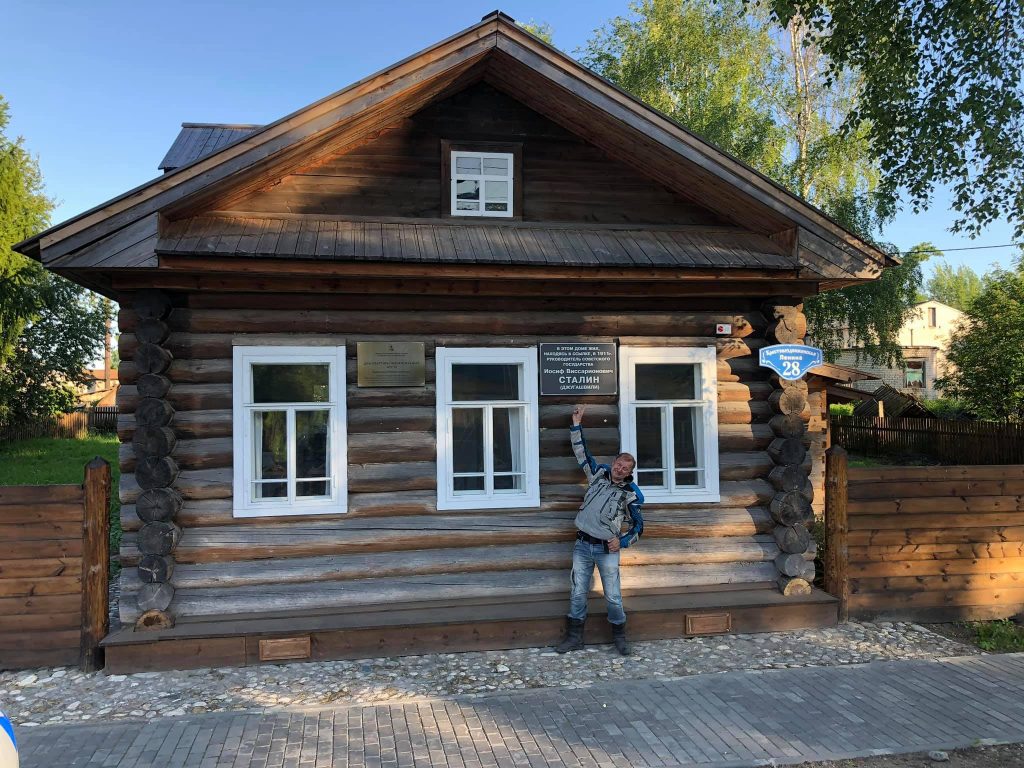
Verkhnyaya Uftyuga.
We rode 64 km from Kotlas to a small town Krasnoborsk, then crossed the Northern Dvina by ferry and reached its right bank, then rode another 47 km along a dusty grader road and arrived in Verkhnyaya Uftyuga, a small old village famous for its extraordinarily beautiful wooden temple 43 m high as the first reason.
Dmitry Solunsky's Church was built by residents at the end of the 18th century and it is one of the tallest wooden churches in Russia. Its pointed dome with a cross is visible from everywhere in the village. The timbered walls and roof, blackened by time, have stood for more than two hundred years and been so well preserved. It's wonderful how people were able to build such structures in the old days so there is no need for a major repair even 200 years later!
There are also old log huts in Verkhnyaya Uftyuga, but few of them left. Every house has a woodpile and wood-fired stove heating as there is no coal or gas here.
Riding along one of the streets, I noticed a high pole with a crossbar, at the end of which a chain was tied. This mechanism is called "a crane" and serves to lift a bucket of water from a deep well. We rode closer and the owner, whose name was Nikolai, appeared and greeted us. He was happy to tell us about this well, which his father had built. The peculiarity of the well is that it had been made of a single tree trunk 6 m long, hollowed out inside and buried to a depth of 5 metres. There is cold spring water at the bottom of it. The bucket is also wooden. And the water is so tasty, by the way!
Verkhnyaya Uftyuga is a really fascinating village, but we have to hurry in order to catch the last ferry, which transports huge timber trucks loaded with logs to the opposite bank of the Northern Dvina.
 Cap-travel.ru
Cap-travel.ru